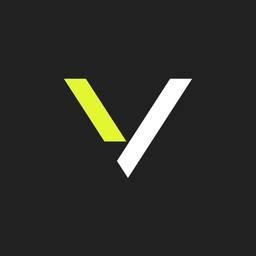Radio stations need new ways to attract and engage listeners. This is critical in competing with other stations for advertising dollars. It’s not enough to simply broadcast content. Stations must now find ways to build a stronger bond with their audiences across channels.
In this article, we will cover:
How to understand your listeners
Most radio stations have a decent idea of who tunes in, but that doesn’t mean you cannot do more research. To understand your listeners, most will start with basic demographic information such as age groups, gender, average income and education level, and more. Once you have these basic data points, you can start drilling deeper into what drives them to consume your station broadcasts.
What are their interests and preferences? Do they listen primarily during commutes or at home? And what shows or genres seem to get the better ratings? In addition, if you’ve created a digital version of your broadcasts online or through a player, you can take a look at how many are tuning in through that format and determine what percentage of your audience tunes in using traditional methods. All of this feeds into what programming you offer at any given time and helps determine the best fit for advertiser placements.
While some of this data may be difficult to pull with the current tools you have at your disposal, you can try to learn more about your listeners by soliciting feedback. Surveys, focus groups, or even social media channels can help you garner more data about your audience and what they want to hear. This information can then inform your strategy to engage, entertain, and attract listeners to your station.
Engaging and entertaining radio listeners
Once you have built an accurate audience profile, the next step is to determine what content will move the engagement needle the most. This is where you can start getting creative to develop content that will make your audience want to continuously return for more. Doing so will ultimately help you build a more loyal, engaged fanbase and help you grow your audience.
As mentioned above, audience outreach is good for understanding what makes them tick. But at the same time, it can be a great way to simply engage with your listeners. Most stations already do this over the air with phone calls, but you can also use other channels such as social media, email, or a forum on your station’s website. Developing this kind of rapport with your audience helps build a sense of community around the station.
Other common ways to engage with your listeners include:
- Contests and giveaways
- Offering prizes or exclusive access to content
- Collaborating with local businesses, organizations, media outlets, and sponsors
The latter, of course, also helps you further contribute to a sense of community around the station. For example, you might broadcast from a local restaurant, bar, or music venue in the community, supporting local businesses while actually putting your voice talent face-to-face with your listeners. In turn, this can help further grow listenership and goodwill.
Best practices for building a strong radio brand
Understanding your audience plays a crucial role in how you build your station’s brand. It’s more than just the content you produce; it’s also the tone you take with your radio audience and how you represent yourselves when conducting community outreach.
So when you develop your brand, you should follow these best practices:
- Your brand should be unique and memorable and do two things: stand out from other stations and resonate with your target audience, both of which impact brand awareness.
- Be consistent with your messaging and visuals; that includes what you use across all of your social media channels.
- Stay true to your brand, and don’t get caught up in what others are doing or what’s trending at any time.
Final thoughts on growing radio listeners
Radio stations face challenges in garnering the attention of today’s audiences. From all the different channels they consume content on to the sheer amount of content that’s coming out every day, undivided attention is hard to come by. But if you can understand them well, develop and broadcast what they’re interested in, and present a consistent brand, you can help cut through that noise.
To produce more impactful content and extend the mileage you can extract from your broadcasts, Veritone has a pair of broadcast-focused solutions to help radio stations compete more effectively:
- Veritone Discovery: An AI solution that creates advertising and content intelligence and enables you to capture and track your content. This allows you to search against your content to surface past moments so you can reuse or repurpose your content in the future.
- Veritone Attribute: A turnkey broadcast attribution solution that correlates an ad with web lift in near-real time. This allows you to determine what ads work with your audience to help you optimize campaigns.
You can practically and methodically execute a growth campaign with the right tools, brand strategy, engagement tactics, and voice talent and personalities. In doing so, you can grow revenue, using technologies to improve your content and obtain and retain advertising clients, which we’ll discuss in future articles.
To learn more about Veritone Discovery or Attribute, schedule a demo today.
Further Reading:
What’s New With Veritone in Radio and Broadcast Industries
Hubbard Radio St. Louis Lands $70K Renewal With Lift Data From Veritone Attribute
Bonneville Seattle Earns Key Account’s Business With Veritone Attribute





